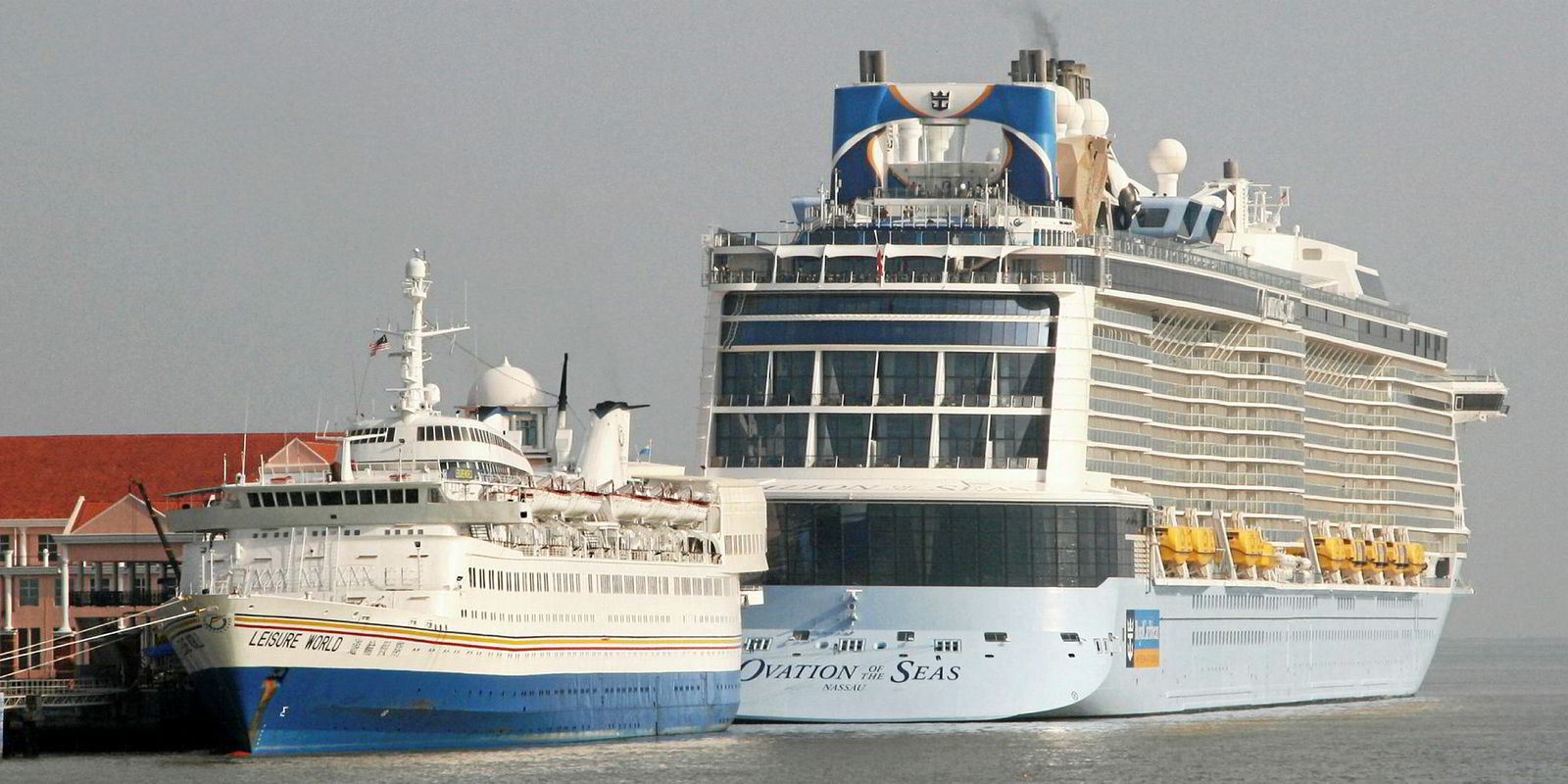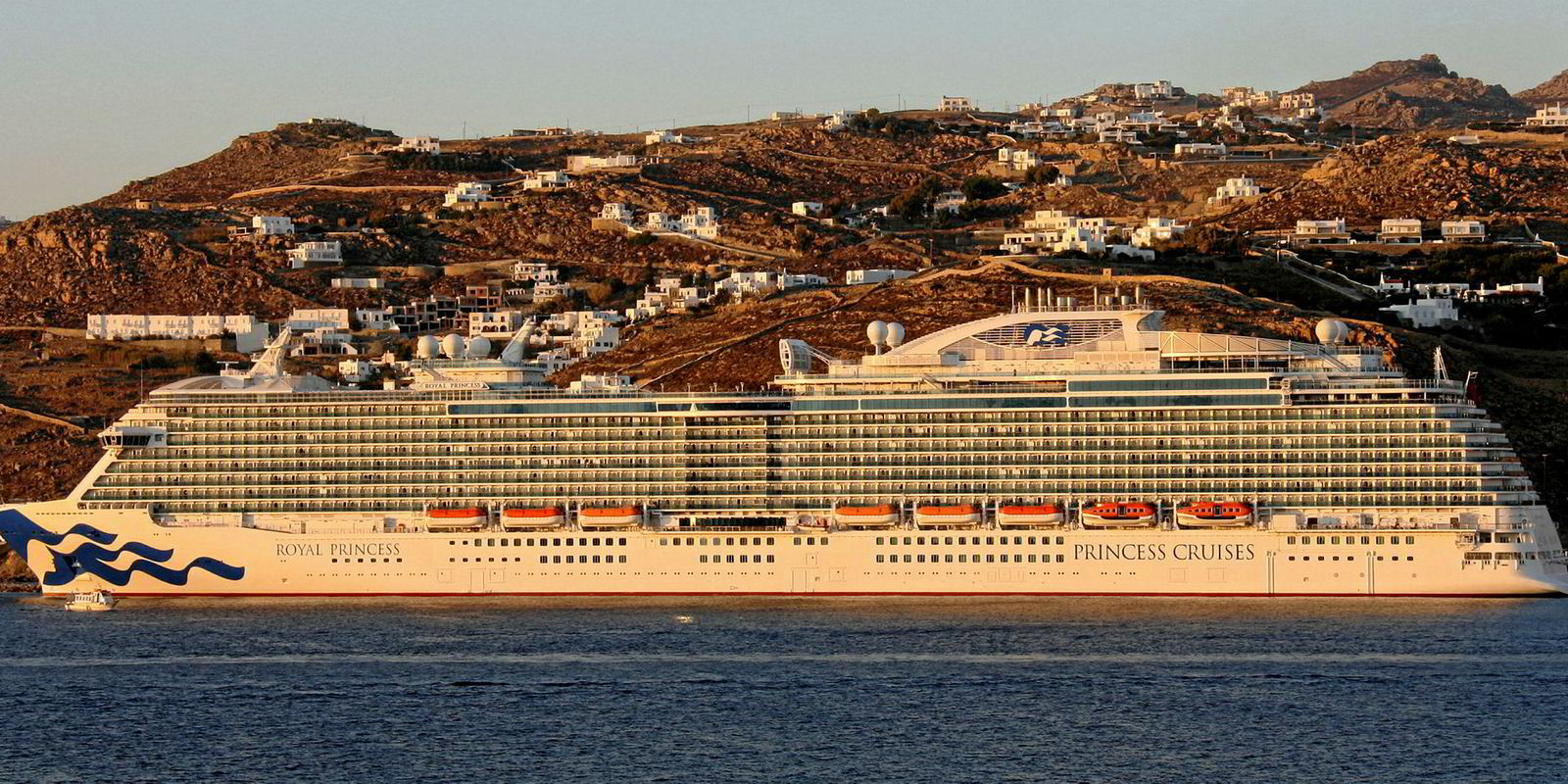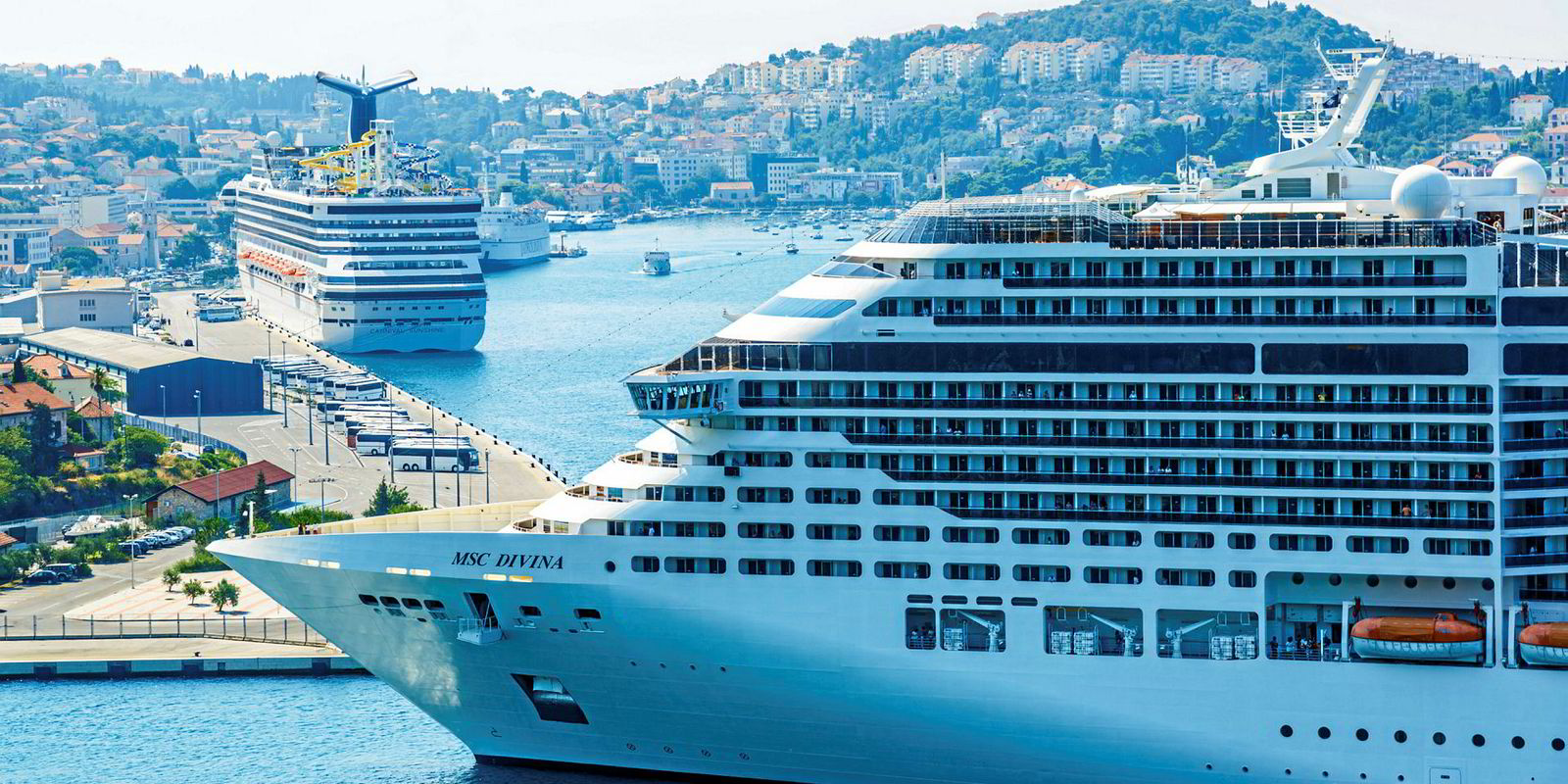Giant people-movers in excess of 100,000-gt have become the norm in the cruise industry, with ships sometimes carrying more than 5,000 passengers.
But congestion at tour sites they visit is creating a problem that is likely to get worse as more of these behemoths take to the water.
People like the resort-style facilities they find on these bigger ships, which consistently sail full. Cruise company accountants like the big revenues they earn, judging by the healthy profits listed mass-market lines consistently release.
But although these vessels have enough diversions available onboard to keep their passengers entertained for a week without ever having to step ashore, those passengers inconveniently still consider exotic destinations an important part of the package.
It has become one of the biggest problems a super-sized cruise industry faces today.
The size of the biggest cruiseships precludes them calling at many of the ports that used to be popular on tour itineraries, and often leads to severe congestion in those ports they can visit.
Cities with large ports with dedicated cruise terminals, or at least enough space on a commercial dock, are fine. Big cities have the space to absorb large numbers of passengers, but they are often not the places people want to visit.
The glossy pictures in any cruise line brochure or on its website are not of big cities. They show exotic islands and historic towns in picturesque settings that sell cruising as an idyllic, romantic escape to places where vacationers can stroll through history or take a break from the rest of the world.
These are the ports that are the most popular. They are also the ones that are becoming most problematic.
Small ports with no docking facilities often have to transfer passengers in tender boats. This was not such a problem when cruiseships were smaller and carried a few hundred passengers, but it is just too difficult to try to transfer 5,000 people this way.

So cruiseships are being sent to the limited number of destinations that can handle them.
For people living or holidaying in these places, it has become a case of cruise overkill. On busy days up to a dozen ships, each carrying between 3,000 and 5,000 passengers, dock at or drop anchor off these small, previously exclusive destinations, flooding them with tens of thousands of extra visitors.
Large cruiseships are becoming the subject of vociferous complaints from the residents of places they visit, who claim these giants have left them overwhelmed and are threatening their non-cruise tourist sector.
It was not a problem when the industry was in its infancy and the ships were small and few in number. A cruiseship anchored in the bay or tied up at the waterfront was an object of interest. Today’s big ships are different, and their bulk often leads to accusations that they are blocking the views hotel guests have paid to enjoy.
There are other complaints beyond the overwhelming numbers of people. Venice residents have just won their long campaign to ban the big ships. Cruiseships larger than 100,000-gt will be barred from the city centre. Residents had argued that the vessels were stressing Venice’s fragile infrastructure, and that their wakes as they passed through the Grand Canal were damaging the city’s very foundations.
Residents of the Italian city of Palermo were left fuming this year when their taps ran dry during a period of blisteringly hot weather. The local water authority admitted that it had run out of water because cruiseships had been refilling their water tanks. Authorities in other Italian ports, perhaps fearing the same wrath, promptly banned the sale of water to cruiseships during dry spells.
Local newspapers are frequently full of articles or letters bemoaning the traffic snarl-ups that occur because of the huge fleet of tour buses needed to service cruiseships.
The Greek island of Santorini, which markets itself as one of the world’s most romantic destinations, suffers human gridlock when tens of thousands of cruise passengers flood its narrow cobbled streets. Guide books are beginning to suggest that non-cruise visitors avoid the historic city centres and tourist spots until after the ships have left in the early evening.
Well-publicised demonstrations against big cruiseships in Venice and several Caribbean islands have led to local authorities promising to give serious consideration to kicking the big ships out of port, or at least restricting their numbers.
Venice and some other authorities have already begun to implement such measures.
The mayor of the Croatian city of Dubrovnik, one of the Mediterranean’s most popular ports of call, announced in August that the mediaeval walled city would limit the number of people allowed inside its ramparts to 4,000 at any one time.
Mayor Mato Frankovic added that he would cut the number of cruiseships calling, which had previously been uncontrolled.
Last year 530 cruiseships visited Dubrovnik, bringing 800,000 passengers. This influx has been blamed in part for a dramatic decline in the city’s population and for other tourists shunning it as a long-stay destination.
Frankovic told the media that although these measures would undoubtedly be unpopular with cruise lines, his priority was to ensure the quality of life for local people and other visiting tourists.
The Norwegian city of Bergen announced in October that it was restricting the number of cruiseships that could visit at any given time. The local municipality, in collaboration with the Port of Bergen and Visit Bergen, decided to cap the number of cruise calls per day at four ships and/or 9,000 passengers.
Port of Bergen’s manager of cruise development, Sandra Bratland, told lines that while tourism was important and welcome, the steady growth of visitors had led to a debate over how many the city could comfortably accommodate. She said the goal was to maintain Bergen as a sustainable, popular city to live in, visit and do business in.

Restrictions set by Dubrovnik and Bergen are likely to be replicated by other cruise destinations that are feeling increasingly overwhelmed. TW+ understands from well-placed sources in Greece that similar measures are being considered for Santorini and the equally popular island of Mykonos.
Developing alternative ports is difficult as it often runs up against protests from residents who do not want to be saddled with the same problems that are plaguing the busier destinations.
Environmental and other advocacy groups are quick to raise objections when cruise terminal plans are announced.
This has been the case at the Jamaican cruise destination port of Falmouth Bay, which went into operation in 2011. Groups there have complained that the building of a large cruiseship pier led to the destruction of a coral reef; and that few passengers bother to leave the adjacent gated “tourist town” unless on bus tours, which means little cash filters into the local economy.
There are currently 69 cruiseships in service that exceed 100,000-gt. Over the next five years, 50 more cruiseships above 100,000-gt are scheduled or planned to enter service. Twelve of these will be more than 156,000-gt, the largest of which will be a pair of sisterships to the current largest, Harmony of the Seas.
There are also logistical challenges because new infrastructure is required, ranging from building piers to establishing fleets of tour buses and training tour guides.
These are not cheap investments, and are deemed risky for smaller destinations, as cruise lines are quick to cut ports that are not considered interesting by their passengers or are deemed risky because of political factors.
The latter has been the case for the Turkish ports of Istanbul, Kusadasi and Cesme. Once extremely popular ports of call, their cruise tourism infrastructure has been sitting almost unused after most major cruise lines stopped calling there two years ago.
Lines also tell TW+ that selling cruises that call at unfamiliar places rather than the popular big-ticket ports is extremely difficult.
The port and resort predicament that cruise lines face will only get worse as cruiseships grow bigger and more of the giants are launched. The industry needs to put on its thinking cap.
QUEENS OF THE SEA: THE 10 BIGGEST CRUISESHIPS AFLOAT
| Ship | Owner | GT | Built | Length* | Passengers |
| 1 Harmony of the Seas | Royal Caribbean | 226,963 | 2016 | 362.12 | 6,780 |
| 2 Allure of the Seas | Royal Caribbean | 225,282 | 2010 | 362 | 7,148 |
| = 2 Oasis of the Seas | Royal Caribbean | 225,282 | 2009 | 362 | 7,144 |
| 4 MSC Meraviglia | MSC Cruises | 171,598 | 2017 | 315 | 5,714 |
| 5 Quantum of the Seas | Royal Caribbean | 168,666 | 2014 | 347.08 | 4,905 |
| = 5 Anthem of the Seas | Royal Caribbean | 168,666 | 2015 | 347.08 | 4,905 |
| = 5 Ovation of the Seas | Royal Caribbean | 168,666 | 2016 | 347.08 | 4,905 |
| 8 Norwegian Joy | NCL | 167,725 | 2017 | 333.46 | 5,000 |
| 9 Norwegian Escape | NCL | 165,157 | 2015 | 325.9 | 5,000 |
| 10 Liberty of the Seas | Royal Caribbean | 155,889 | 2007 | 339 | 4,375 |



